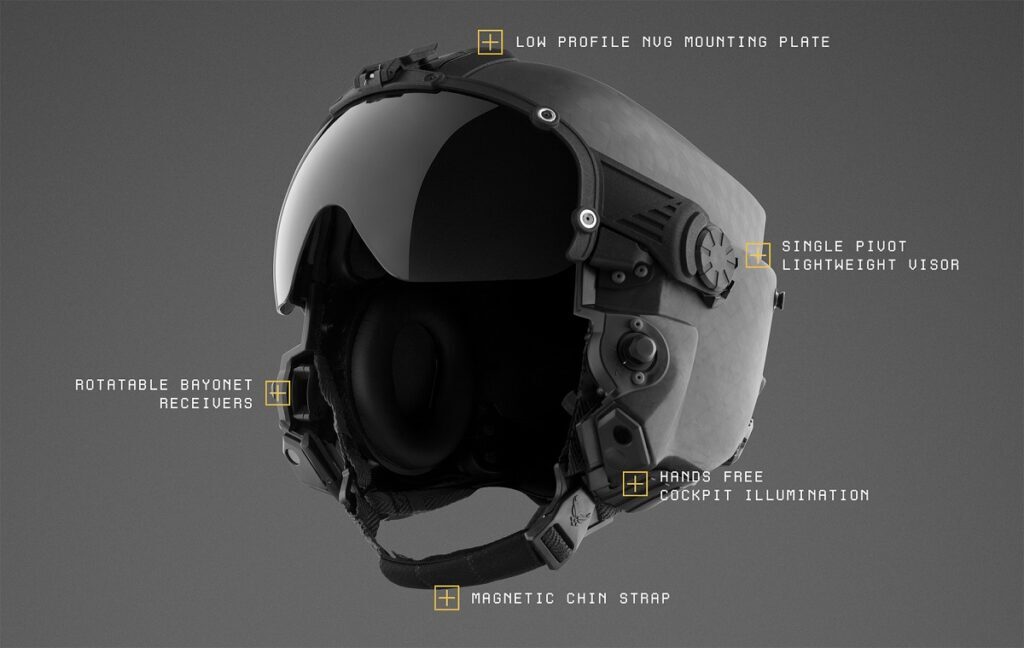
The U.S. Air Force has made a final selection for a next generation helmet system stemming from an industry challenge first launched in 2019. Pictured here, is the winner of the competition, the AV2.2 helmet. (Photo, courtesy of Lift Technologies)
The U.S. Air Force has picked California-based LIFT Airborne Technologies‘ AV 2.2 helmet to serve as the Next Generation Fixed Wing helmet.
LIFT Technologies’ offering was competing in the prototype phase against two designs by Michigan-based aircraft helmet heavyweight, GENTEX Corp., and Idaho-based Aviation Specialties Unlimited, which teamed with Tennessee-based Paraclete Aviation Life Support.
The AV 2.2, after testing, is to field first for F-15E pilots, and then for pilots of all other service fixed wing aircraft except for the F-35. An AV 2.2 production contract may come in 2024, the Air Force said.
The AV 2.2 is to replace the 1980s-era HGU-55/P by Gentex. The carbon fiber AV2.2 helmet is to be lighter, cooler, and to provide easy accommodation for helmet mounted cueing systems and night vision goggles. The AV 2.2 also features a jawbone-activated light for pilots to view needed information at night when landing or during other maneuvers.
Any helmet weight savings can significantly reduce physical stress, as 200-pound pilots must withstand 135 pounds of pressure on their necks in high, 9G maneuvers.
The $20 million Next Generation Fixed Wing Helmet prototype effort stemmed from an AFWERX Helmet Challenge in 2019 and was one of the first AFWERX initiatives, per Air Force Materiel Command (AFMC). Overall, the cost of the new helmet program could be $400 million to meet an Air Force Life Cycle Management Center requirement.
Air Combat Command (ACC) wanted “a next-generation helmet to address issues with long-term neck and back injuries, optimize aircraft technology, improve pilot longevity, and provide better fitment to diverse aircrews,” AFMC said in a June 27 statement.
Since the early 1980s when the HGU-55/P debuted, “gains in aircraft technology and the demographic of pilots have changed,” Scott Cota, an aircrew flight equipment program analyst with the ACC plans and requirements branch, said in the AFMC statement. “The legacy helmet was not originally designed to support advances in aircraft helmet-mounted display systems, causing pilots to fly with equipment not optimized for them, especially our female aircrew.”
“The implementation of helmet-mounted devices has added weight and changed the center of gravity, leading to discomfort for operators,” per AFMC. “In addition, a 2020 Air Force anthropometric study identified the need to add a size small helmet that better optimizes the fit for affected female aviators, Cota said.”
This article was first published by Defense Daily, a sister publication to Avionics International.